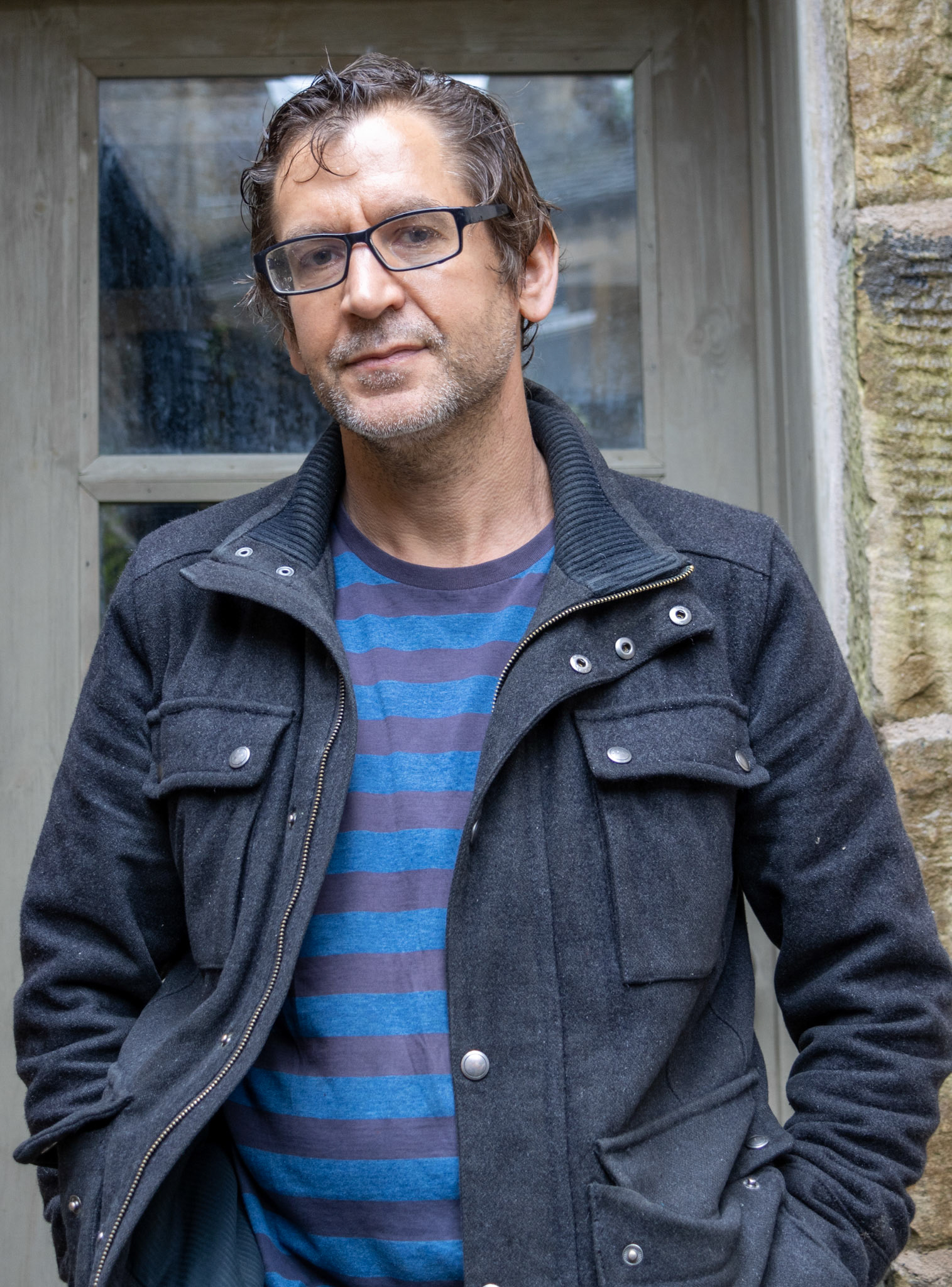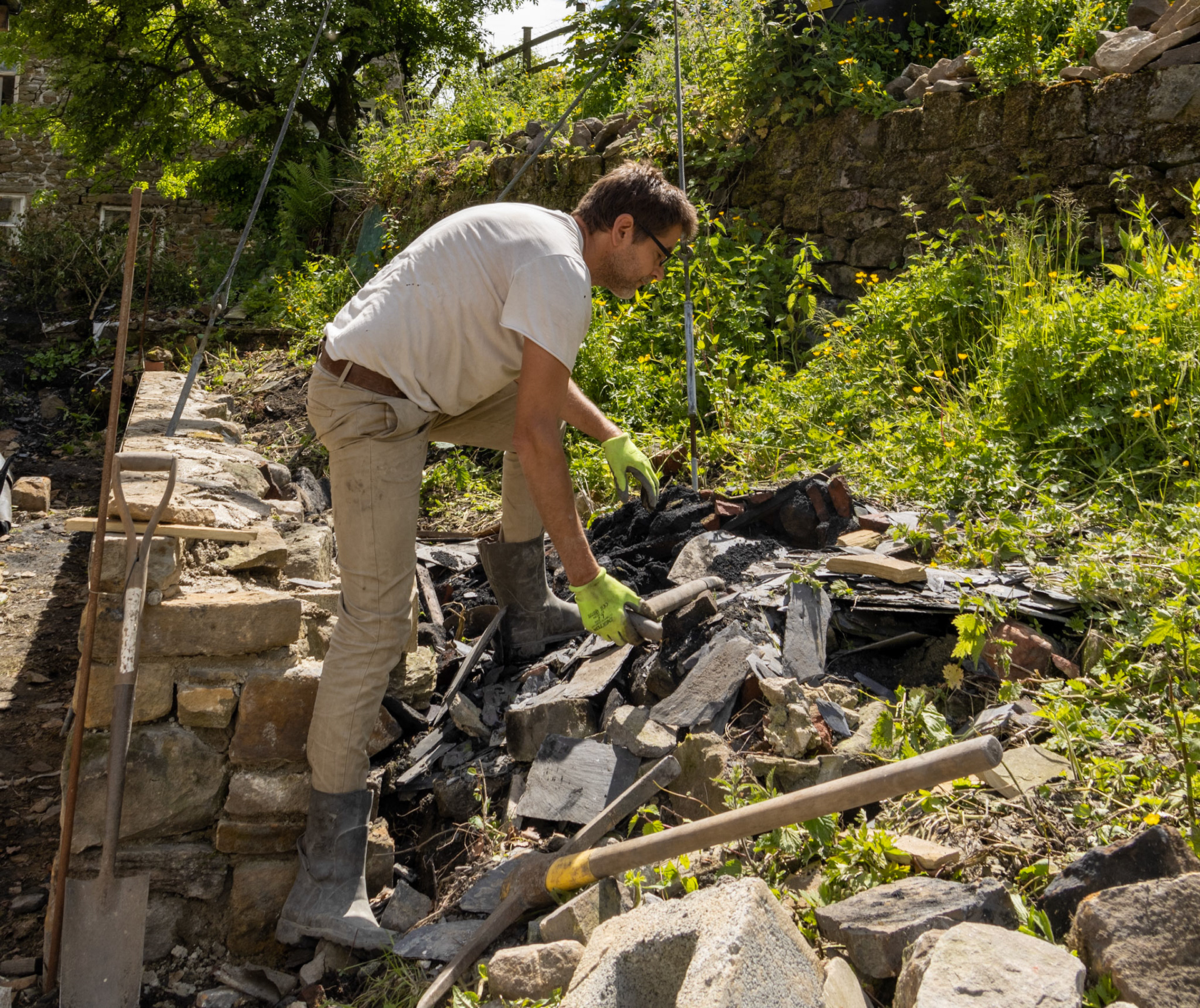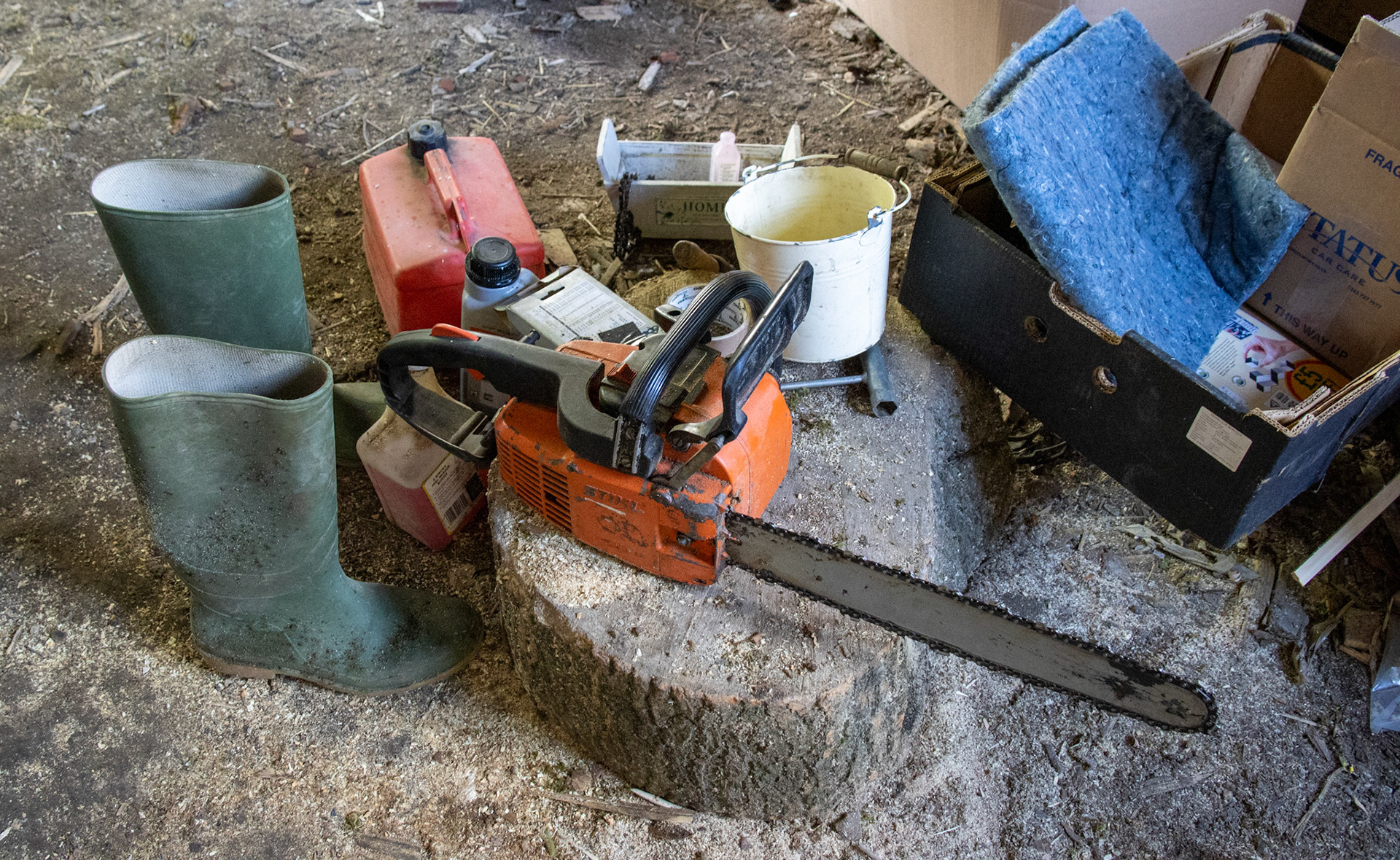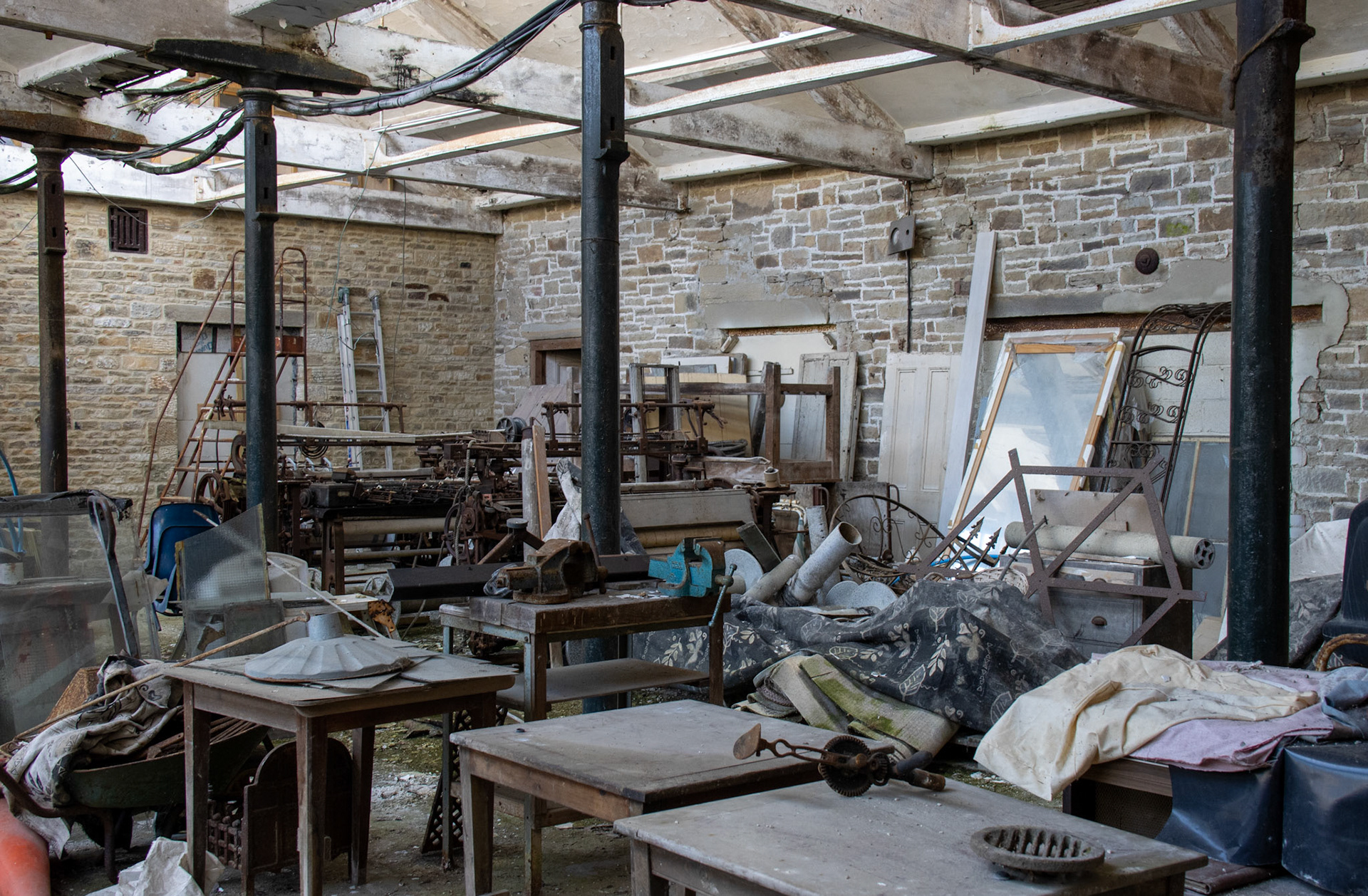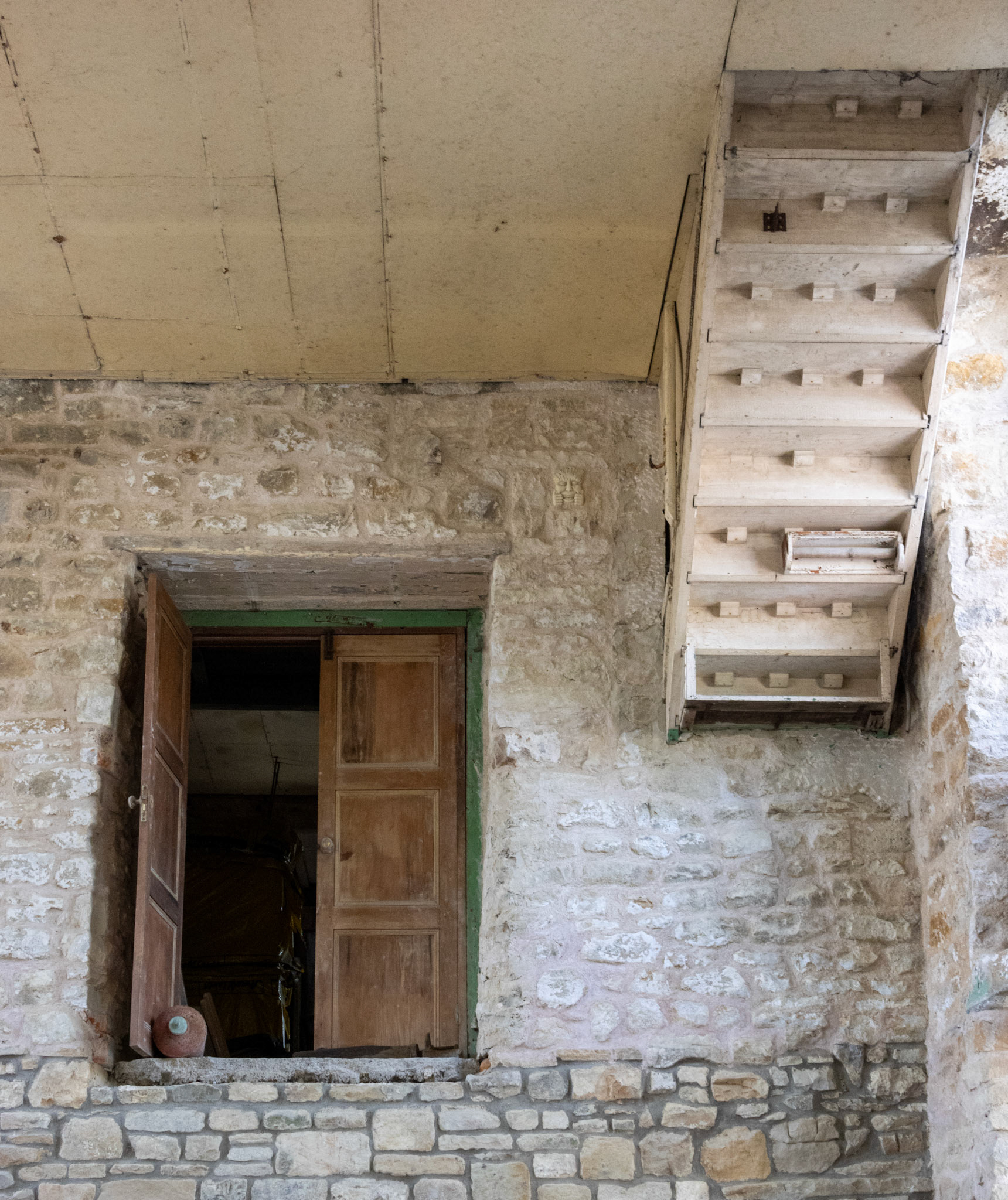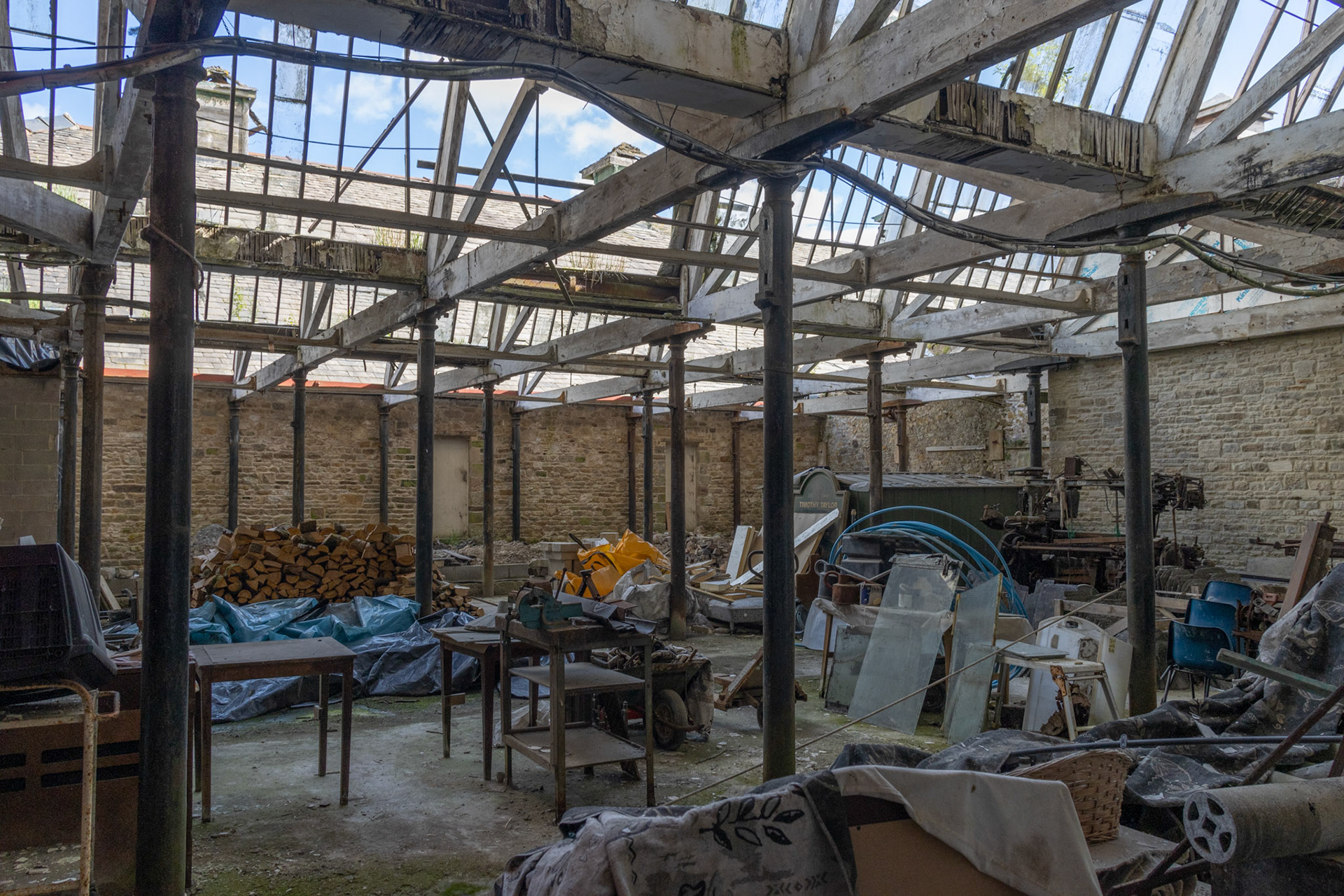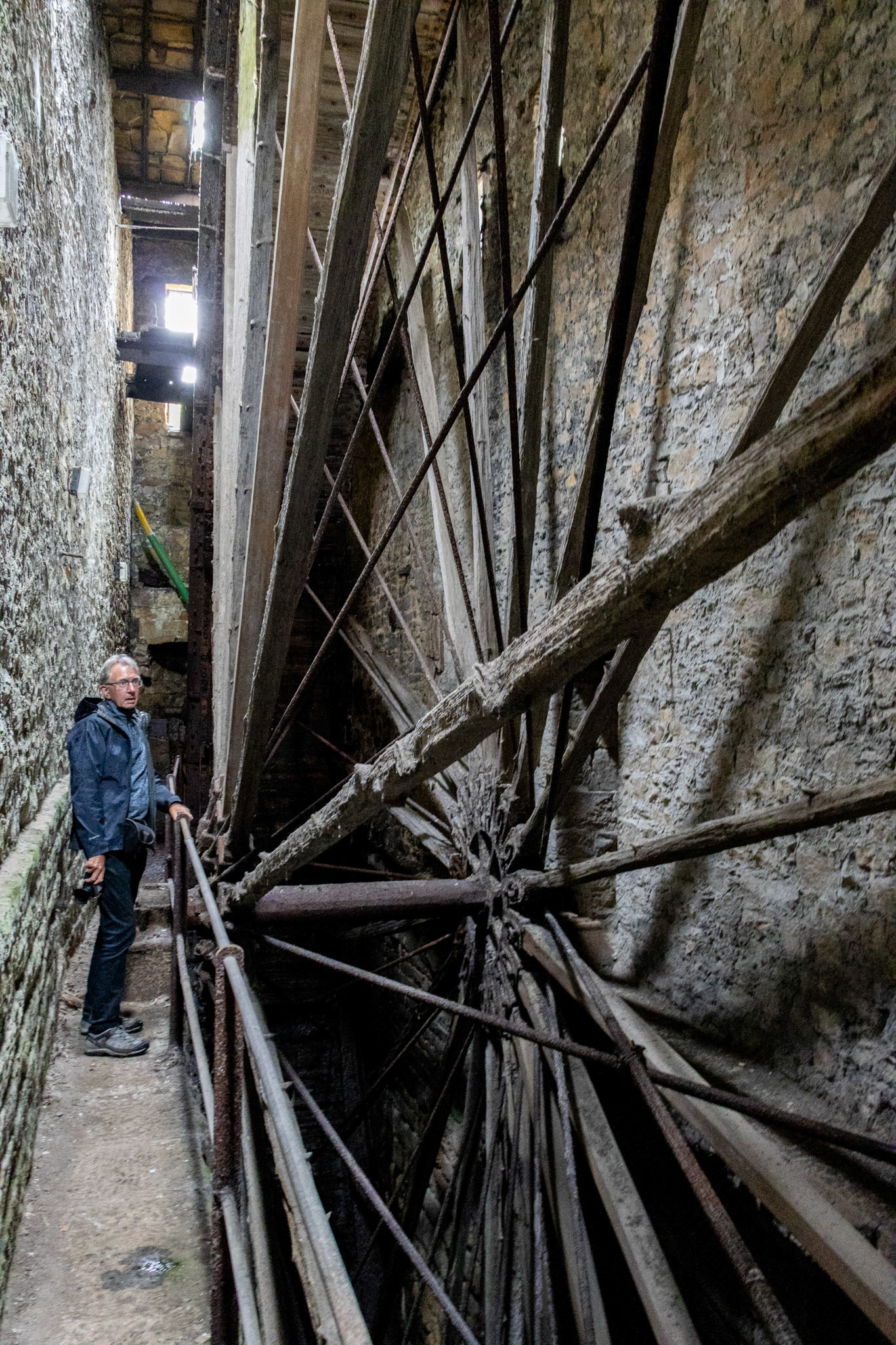Dale End Mill is a Grade II* listed mill located close to the Pennine Way at Lothersdale. In 1792 Thomas Parker converted the mill from corn-grinding to textile manufacturing and by 1835 the mill was given over to worsted spinning. The subsequent expansion of the mill, including the addition of weaving sheds in the 1850’s, created the need for a larger waterwheel supplemented by a steam engine and the addition of a 90ft chimney.
In 1852 James Ellison designed and built the magnificent 45-foot diameter suspension wheel. The wheel at Dale End Mill is reputed to be the largest indoor waterwheel in the world and a superb example of the millwrights’ craft. The waterwheel and steam engine together provided the power for 190 looms and 1700 spindles. The waterwheel was powered via a mill pond within the village channelled through a goit and linking to the beck which runs directly under the mill.
The remains of a Green’s Economiser can also be seen; stacks of metal pipes arranged in the flues leading from the boiler to the chimney. Designed by Edward Green, the economiser made savings by utilising the exhaust gases from the boiler furnace to heat boiler feed water, pumped through the pipes, thereby reducing the energy needed to produce steam.
The mill covers 36,000 square feet including weaving sheds of 18,000 square feet. Four generations of the Wilson family owned and managed the mill prior to its purchase in 1981 by June Barrow as part of a partnership. June was determined to conserve the building for the benefit of the village. Parts of the mill were subsequently used for furniture retail, storage and other warehouse uses.
The mill covers 36,000 square feet including weaving sheds of 18,000 square feet. Four generations of the Wilson family owned and managed the mill prior to its purchase in 1981 by June Barrow as part of a partnership. June was determined to conserve the building for the benefit of the village. Parts of the mill were subsequently used for furniture retail, storage and other warehouse uses.
June's son Jon Barrow is now single handily restoring the mill to create 3 holiday units, a variety of commercial workshops for artisan businesses and other potential uses.










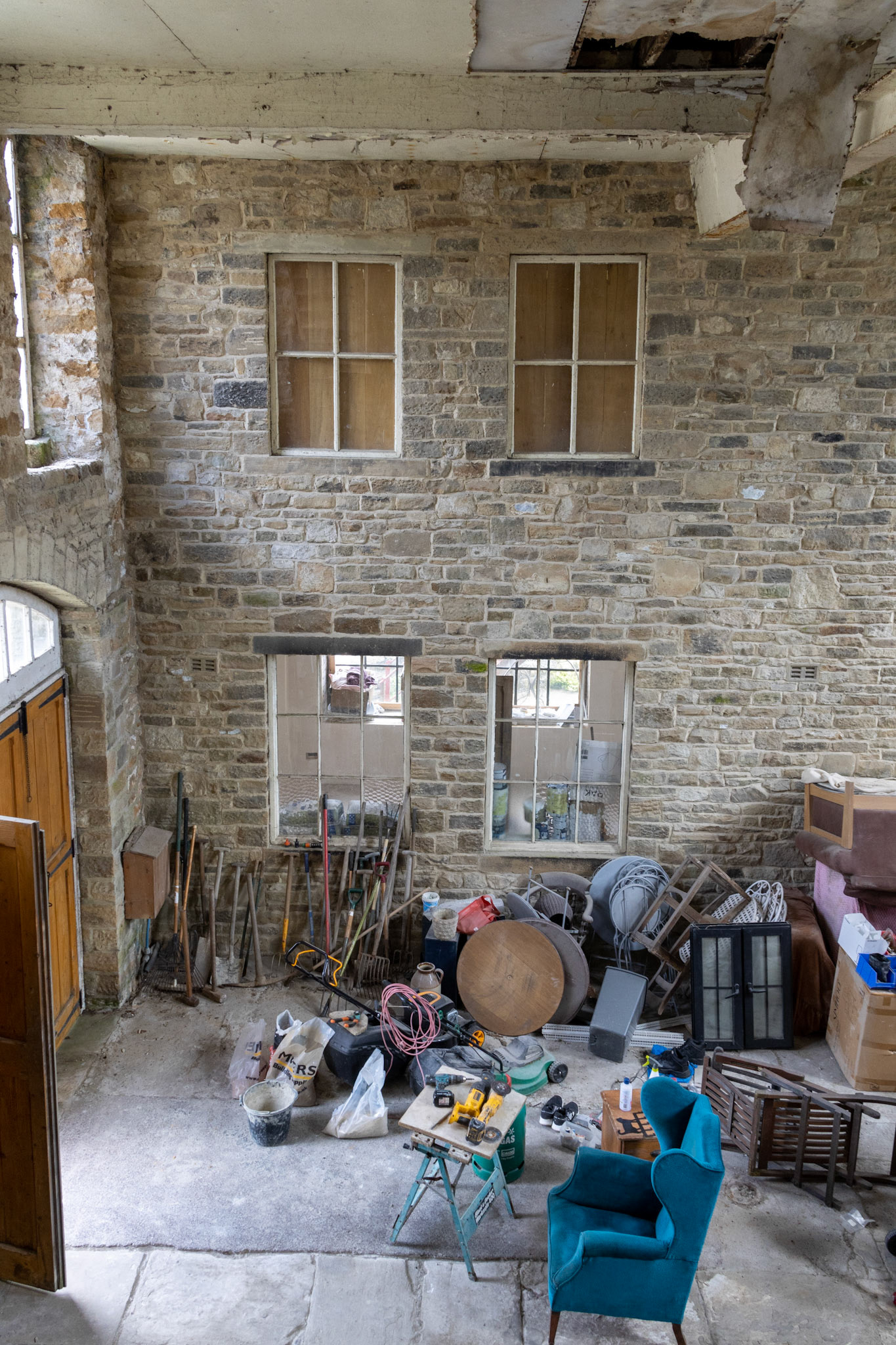








June Barrow

Jon Barrow
